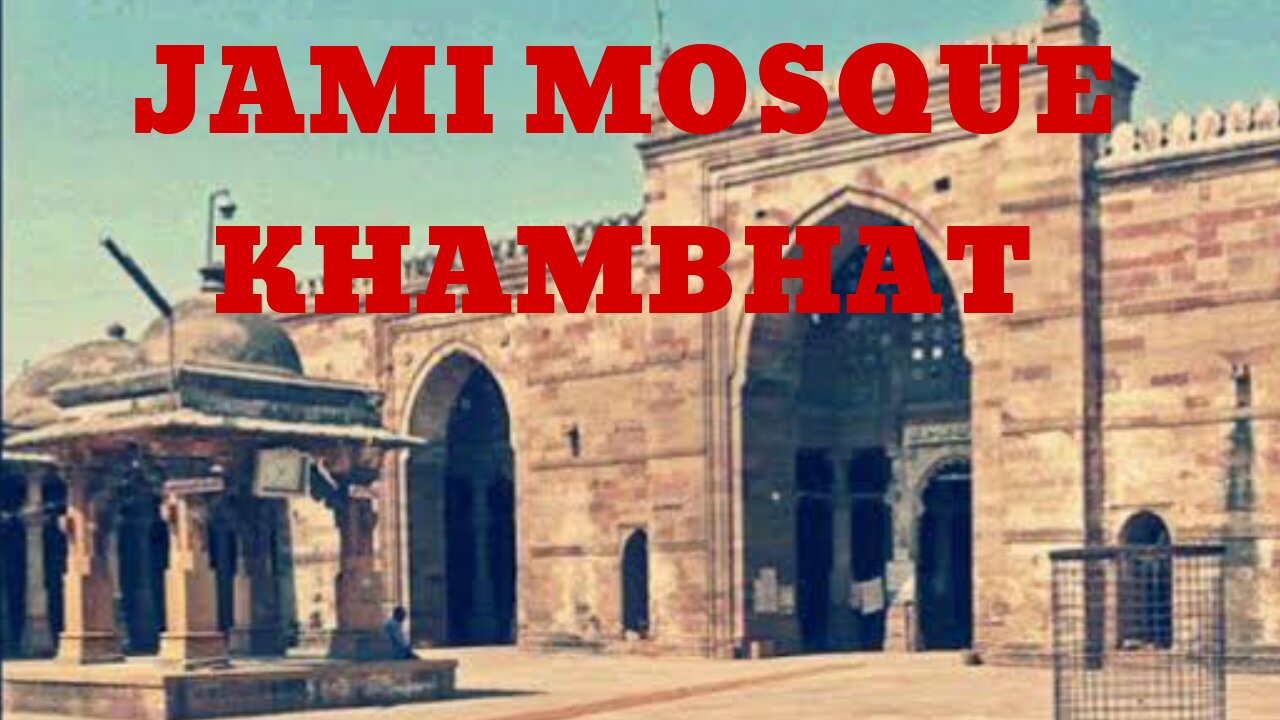Premium Only Content

Do you know that Jumma Mosque of Khambhat was built by Jin in one night???
Juma Masjid, Khambhat – A Historical Perspective
The ancient city of Khambhat (historically called Cambay) in the state of Gujarat, located on the west coast of India, has been an important centre of trade and culture. Located in this city is the Juma Masjid, which is not only a religious place but also a glorious historical heritage. This mosque was built in 1325 AD and is considered a unique example of early Indo-Islamic architecture of India.
Architecture and Construction
The Juma Masjid was built by Umar bin Ahmed al-Qazruni, a prosperous merchant of Khambhat at that time. This mosque was built when Gujarat came under Muslim rule under Sultan Alauddin Khilji. It is believed that stones and pillars from Hindu and Jain temples were reused in the construction of this mosque, which was a common practice at that time.
The mosque has about 100 pillars that support the roof of the prayer hall. Its large and open courtyard, latticed jaalis, and pavilion style roof make it distinctive. The mosque is devoid of minarets, but its torans (religious arches) reflect the Sultani architecture of Gujarat.
Religious and Cultural Importance
The mosque is not only a holy place for worshippers but also bears a living testimony to the fusion of Hindu, Jain and Islamic cultures in Gujarat's history. A domed chamber in the southern part of the mosque houses the tomb of Al-Qazruni, made of simple but dignified marble. There are several other tombs of the 14th and 15th centuries.
Conclusion
The Juma Masjid of Khambhat is not just a stone structure but a place where architecture, history and faith meet. The mosque still holds a special place among the historical heritage of Gujarat and remains a source of inspiration for history lovers, architects and devotees.
YouTube channel:
https://youtu.be/9ecsYXIrLFQ?si=j282Rl7lyj9WxMAg
-
 2:58:00
2:58:00
FreshandFit
7 hours agoAyesha Curry Says She Never Wanted A Family All Along
145K79 -
 15:46
15:46
Odd Man Out
2 days agoThese 40 something women discover they're worthless, but only when it's too late
14.6K122 -
 2:04:19
2:04:19
Inverted World Live
8 hours agoJoe Exotic Calls From Prison | Ep. 118
69.7K8 -
 56:24
56:24
DeVory Darkins
16 hours ago $57.63 earnedFederal Judge issues shocking order against Trump as Chicago Mayor pulls insane stunt
124K353 -
 1:43:56
1:43:56
Badlands Media
14 hours agoBaseless Conspiracies Ep. 153: Insurrection, Assassination, and the Charlie Kirk Puzzle
54.9K52 -
 23:51
23:51
Stephen Gardner
7 hours ago🚨Trump did the UNTHINKABLE!
46.7K109 -
 2:54:14
2:54:14
Barry Cunningham
10 hours agoBREAKING NEWS: PRESIDENT TRUMP SAYS HE MAY INVOKE THE INSURRECTION ACT! AND NOW WE KNOW WHY!
49.3K21 -
 40:13
40:13
Clownfish TV
16 hours agoMagic the Gathering Champion BANNED from Tournament Over MAGA Hat?! | Clownfish TV
37.2K22 -
 2:49:47
2:49:47
TimcastIRL
9 hours agoTrump Considers Invoking INSURRECTION ACT To Deploy National Guard to Portland | Timcast IRL
200K127 -
 10:05:38
10:05:38
Dr Disrespect
17 hours ago🔴LIVE - DR DISRESPECT - BLACK OPS 7 - GIVE ME BACK MY NUKE
162K18
